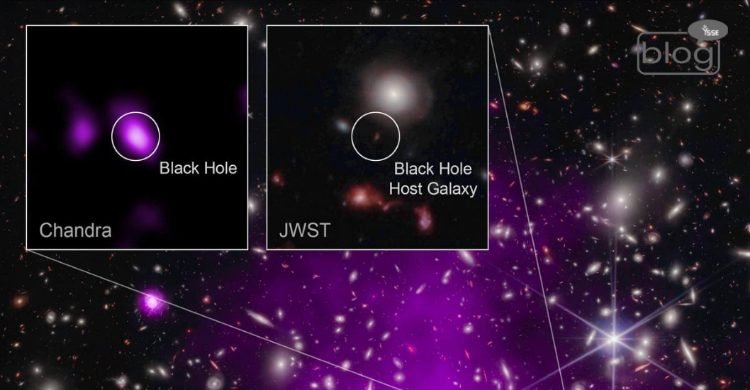A black hole is a place in space where gravity is so strong that nothing, not even light can escape its pull. It forms when a massive star collapses under its own gravity, creating a point in space with infinite density called a singularity, surrounded by a boundary known as the event horizon.
How many ways are there to leave this universe?
Perhaps the greatest known exit entails the death of a star. In 1939, physicist J.Robert Oppenheimer and his student Harlan Snyder, University of California, Berkeley, assumed that when an enough massive star runs out of thermonuclear fuel, it downfall (collapses) inward and keeps collapsing forever, shrink-wrapping space, time, and light around itself in what today is called a black hole.
The Birth of UHZ-1: A Cosmic Cradle –
UHZ-1, a quasar dating back 13.2 billion years, showcases the presence of a supermassive black hole a mere 500 million years after the universe’s birth. This cosmic anomaly rapid a reevaluation of our understanding, questioning the common fiction step by step formation through stellar remain.
Instead, the OBG hypothesis suggests a more direct route – primitive clouds downfall into heavy nucleus. That is the piloted conclusion recently reached by a group of astronomers studying UHZ-1, a speck of light dating from not long after the Big clink. UHZ-1 is a powerful quasar that spat fire and X-rays .
Priyamvada Natarajan’s OBG Concept-
Natarajan and her team at Yale University introduce the groundbreaking concept of OBG, where a young galaxy experiences quick growth of its middle black hole. This challenges the conventional notion of step by step collection through stellar deaths.
The proposal presents an alternative cosmic genesis, investigation into several pathways black holes might take in their constructive stages.
Deep relation: Rethinking the Universe’s Evolution
The relation of UHZ-1 and the OBG concept enhance to the very fabric of the universe’s evolution( Relation). UHZ-1, as the first OBG candidate, provides important evidence supporting the idea of heavy initial seeds originating from direct collapse in the early universe.
This challenges preconceived idea and investigation of the several pathways black holes might take in their formative stages.
Daniel Holz’s Whimsical Analogy –
Holz’s analogy impulse a touch of whimsy into the gravity of the invention. The idea of encountering a celestial existence alike to a 150-pound and 6-foot-tall Kindergartner captures UHZ-1’s anomaly – a cosmic anomaly challenging our cosmic kindergarten of understanding.
UHZ-1 vs. Conventional Wisdom –
As we dig deeper into the cosmic cradle of UHZ-1 and its over-massive black hole, the conventional narrative of stellar deaths giving rise to supermassive black holes seems inadequate.
The proposal of primordial clouds downfall into heavy nucleus offers an alternative cosmic genesis, challenging our understanding and emphasizing the several mechanisms at play.
UHZ-1 as a Celestial lighthouse (Beacon)
In the high tapestry of the cosmos, UHZ-1 stands as a lighthouse challenging our understanding of celestial birth.
Its early elevation disrupts the cosmic timeline, inviting us to reconsideration the common wisdom of stellar deaths as the only architects of supermassive black holes.
Unraveling the Mysteries: Direct Collapse from Primordial Clouds –
As astronomers unravel the mysteries of UHZ-1 and the proposed direct collapse from primordial clouds, the invisible geometry of darkness express new patterns. The universe, it seems, crafts its celestial wonders through several mechanisms, pushing our cosmic comprehension to the limits.
Dr. Holz’s Agnostic Perspective –
Dr. Holz’s cautious optimism adds depth to the tale. While acknowledging the excitement of UHZ-1’s discovery, he maintains an agnostic perspective, highlighting the ongoing mystery and the fascinating to story that will unfold, regardless of the eventual solution.
Conclusion: Beyond Conventional Astrophysics –
In conclusion, the tale of UHZ-1 and over-massive black hole galaxies transcends the confines of conventional astrophysics.
It invites us to engage on a cosmic journey where the ordinary gives way to the extraordinary, where primordial clouds birth celestial giants, and where the unseen threads of the universe weave tales beyond our current grasp.
The cosmic cradle of UHZ-1 wave us to explore, question, and redefine our understanding of the universe’s enigmatic beginnings.
If you are interested to read more blogs better than this please look around our website,
To read more blogs, click here.
Writer
Murshid Alam
Intern, Content Writing department
YSSE

